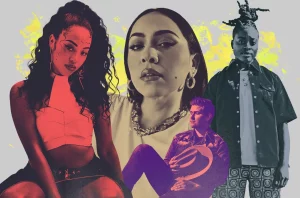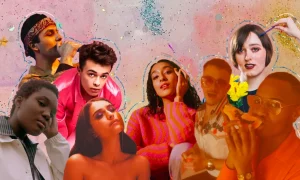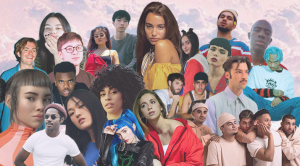Introduction The digital age has revolutionized the music industry, providing unprecedented opportunities for independent (indie) artists to showcase their talent. Digital platforms have become a lifeline for these artists, offering tools and avenues that were previously inaccessible. This article delves into the role of digital platforms in promoting indie artists, exploring how these platforms have
Introduction
The digital age has revolutionized the music industry, providing unprecedented opportunities for independent (indie) artists to showcase their talent. Digital platforms have become a lifeline for these artists, offering tools and avenues that were previously inaccessible. This article delves into the role of digital platforms in promoting indie artists, exploring how these platforms have democratized the music industry and transformed the landscape for emerging talent.
Historical Context

Image by: Google.com
- The Pre-Digital Era
Before the advent of digital platforms, indie artists faced significant challenges in gaining exposure. Traditional routes to success often involved securing a record deal, which required navigating a complex network of industry gatekeepers. This process was not only daunting but also limited to a select few who had the resources and connections to break through.
- The Digital Revolution
The rise of the internet and digital technology has dismantled many of these barriers. Platforms such as YouTube, Spotify, Sound Cloud, and Band camp have emerged as powerful tools for indie artists, enabling them to reach global audiences without the need for a traditional record deal. These platforms have democratized the music industry, allowing talent to rise based on merit rather than industry connections.
Key Digital Platforms and Their Impact

Image by: Google.com
- YouTube
YouTube has become a cornerstone for indie artists looking to gain visibility. With over 2 billion logged-in monthly users, the platform offers an enormous audience. Artists can upload music videos, live performances, and behind-the-scenes content, providing fans with a comprehensive view of their artistry. The platform’s algorithm also helps in discovering new talent, making it easier for indie artists to find their audience.
- Spotify
Spotify has revolutionized music streaming, offering a vast library of songs from both mainstream and indie artists. The platform’s playlist feature is particularly beneficial for indie artists. Getting featured on a popular playlist can lead to significant exposure and streams. Spotify’s data analytics also provide artists with valuable insights into their audience demographics and listening habits, enabling more targeted marketing efforts.
- Sound Cloud
Sound Cloud has a reputation for being a breeding ground for new and experimental music. The platform allows artists to upload their tracks and receive immediate feedback from listeners. Sound Cloud’s community-oriented approach fosters interaction between artists and fans, creating a supportive environment for indie musicians. The platform’s monetization options also provide a revenue stream for artists.
- Band camp
Band camp offers a unique model that allows artists to sell their music directly to fans. This platform is particularly appealing to indie artists because it provides greater control over pricing and distribution. Band camp also supports the sale of merchandise, tickets, and physical media, offering a comprehensive solution for indie artists looking to monetize their work.
The Role of Social Media

Image by: Google.com
- Facebook and Instagram
Social media platforms like Facebook and Instagram are invaluable for indie artists. These platforms offer tools for marketing, fan engagement, and community building. Instagram’s visual focus is particularly suited for promoting music videos, album art, and live performance clips. Facebook’s event feature is useful for promoting gigs and tours.
- Twitter
Twitter allows for real-time interaction with fans and industry professionals. Artists can share updates, engage in conversations, and participate in trending topics. The platform’s hashtag feature also helps in increasing visibility and reach.
The Importance of Digital Marketing

Image by: Google.com
- SEO and Content Marketing
Search Engine Optimization (SEO) and content marketing are crucial for indie artists looking to increase their online presence. By optimizing their websites and social media profiles for search engines, artists can attract more organic traffic. Content marketing, such as blogging and video creation, helps in building a loyal fanbase.
- Email Marketing
Email marketing remains a powerful tool for indie artists. By building an email list, artists can communicate directly with their fans, offering exclusive content, updates, and promotions. This direct line of communication is invaluable for maintaining fan engagement and loyalty.
Challenges and Opportunities

Image by: Google.com
- Algorithmic Limitations
While digital platforms offer numerous benefits, they also come with challenges. Algorithmic biases can sometimes limit the visibility of indie artists, favoring more established acts. Understanding how these algorithms work and optimizing content accordingly is crucial for maximizing exposure.
- Monetization
Monetization remains a significant challenge for indie artists. While platforms like Band camp and Sound Cloud offer revenue streams, the income generated is often insufficient to sustain a full-time career. Diversifying income sources through merchandise sales, live performances, and crowdfunding can help mitigate this issue.
Conclusion
The role of digital platforms in promoting indie artists cannot be overstated. These platforms have democratized the music industry, offering tools and opportunities that were previously inaccessible. While challenges remain, the potential for exposure and growth is immense. As digital technology continues to evolve, indie artists will undoubtedly find new and innovative ways to reach their audiences and sustain their careers.
















